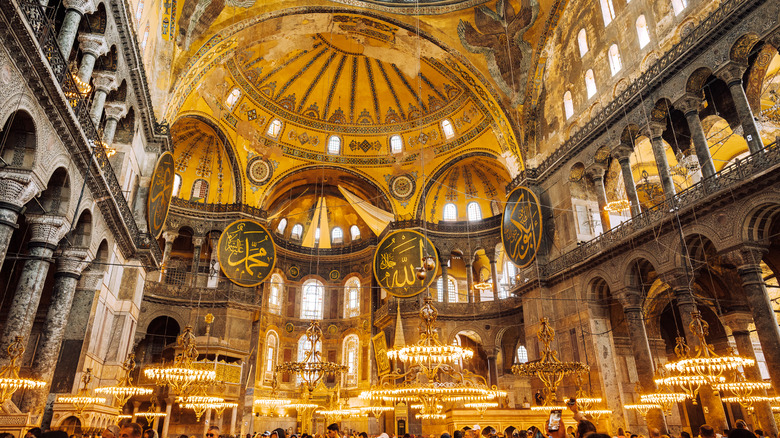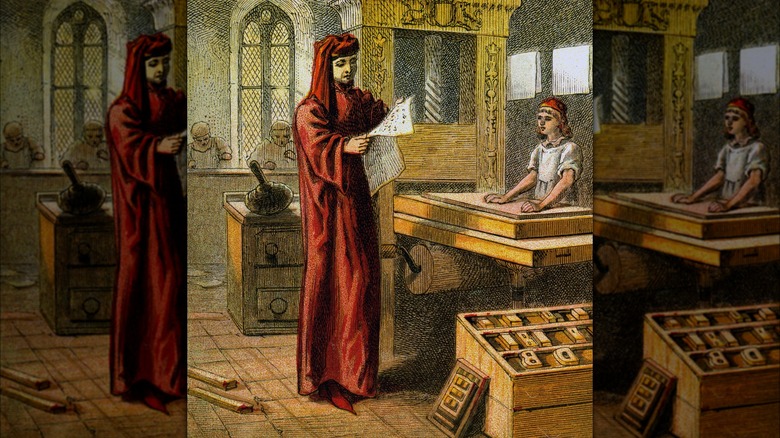Why Are There So Many Christian Denominations?
Modern Christianity is an unbelievably diverse religion. According to the Center for the Study of Global Christianity, as of 2019, there are around 45,000 different Christian denominations. If you suffer from decision anxiety, that is way too much — but it does give Christians a lot of freedom to decide what they actually believe.
Disagreements over Christian theology have a very long and complex history, and in the Middle Ages, the Catholic Church fought hard to maintain Christian unity. Heretics were routinely burned at the stake, and in the 12th century, the Inquisition was created to root out rebels. However, even with some brutal tools at their disposal, the Church was unable to hold a monopoly on the word of Christ.
Although Christian thinkers have fashioned their own versions of the religion for many reasons, there are two major events that bear the brunt of the blame for the creation of so many sects. The first of these is the East-West Schism, which split the church between the Orthodox and Catholic denominations. The second is the Protestant Reformation, during which individuals fought for the right to interpret the Christian Bible in their own way without embracing Catholic dogma.
Breaking up is hard to do
During the late Roman Empire, Emperor Constantine the Great radically changed the course of history by embracing the Christian religion. To provide some semblance of order, he also forced bishops across his empire to meet up and agree on what Christians actually believed at the First Council of Nicaea. In theory, Christians were supposed to have one faith and one set of doctrines.
However, as it turned out, the Roman Empire was not long for this world. The western half gradually collapsed, and the eastern half — known to us as the Byzantine Empire — kept on trucking for almost another 1000 years. In time, the beliefs and practices of those living in ex-Roman lands in the west and those living in Byzantium started to diverge quite naturally, and the complex politics of the Middle Ages exacerbated the split. The divide between the two groups came to a head in quite dramatic fashion in 1054, when a papal legate excommunicated the Patriarch of Constantinople by storming into the Cathedral of Hagia Sophia and placing a papal bull on the altar.
The break was a long time coming. The Byzantines disagreed with the Western Church on everything from the celibacy of priests to the type of bread they should be used in Holy Communion. Most importantly, they refused to accept the pope in Rome as the undisputed head of the Church above their patriarch. The pope was unable to exert his authority in Byzantine lands, and the Eastern Orthodox Church was born as a result.
A turbulent priest
By far the biggest catalyst for Christianity's many divisions was the Protestant Reformation. In the 16th century, the Catholic Church's worst fears were realized when countless congregants broke away from their grasp and adopted new interpretations of scripture. The spark that ignited the flame came in the form of a turbulent priest — Martin Luther. Luther wrote the "95 Theses," a document that challenged the church's ideas and practices, and he hung it up for all to see on a church door in Wittenberg, Germany in 1517.
Luther's rebellious actions emboldened many critics of the church to break away from the Catholic fold, creating new groups such as the Calvinists and the Anabaptists. The Protestants did not necessarily agree with each other on what they believed — but they did agree that they had no need for Catholic priests to tell them what to think. Protestantism in general rejects the idea that people need an intermediary to help them understand scripture.
The invention of the printing press — and to some extent the translation of the Bible into new languages as well — helped to foment growing dissent. It was now easier than ever for people to pick up a copy of the Bible and decide for themselves what they thought about it.


